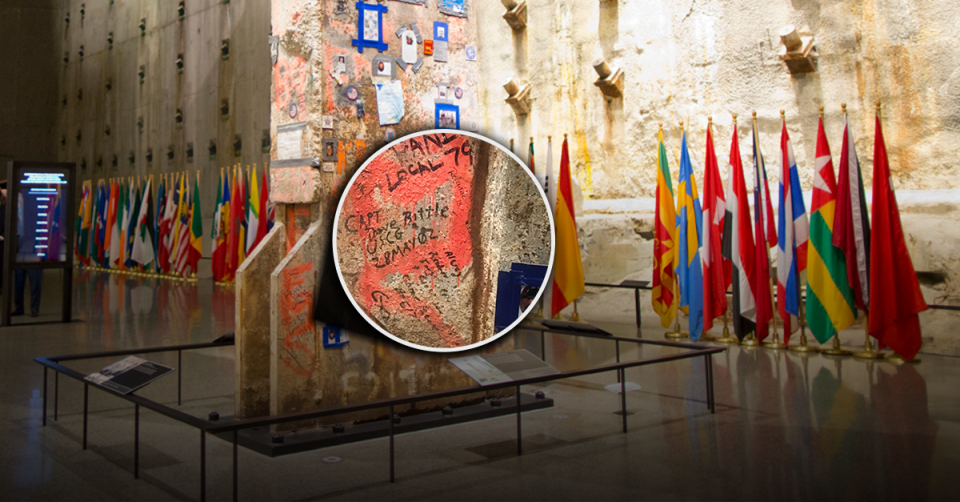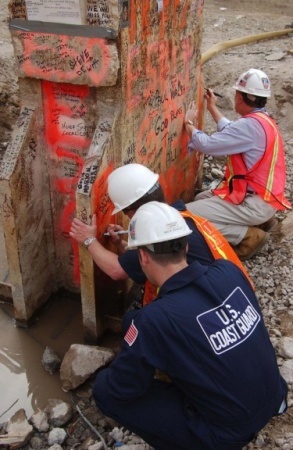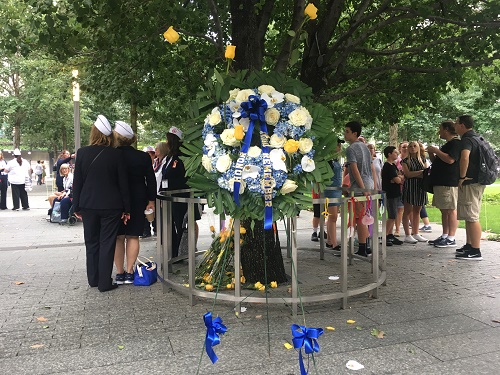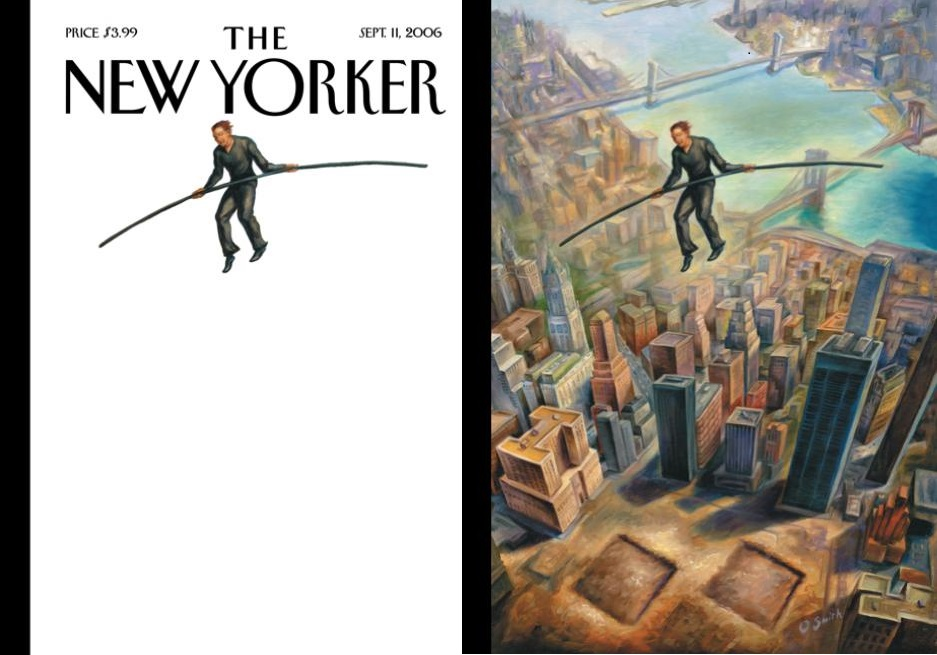Make a donation to the museum
Interpreting the Last Column: U.S. Coast Guard Marking
Interpreting the Last Column: U.S. Coast Guard Marking

Interpreting the Last Column: In this series, 9/11 Memorial & Museum exhibitions staff share the stories behind the markings and tributes placed on the Last Column. The Last Column was the final piece of steel to be removed from the World Trade Center site marking the completion of the nine-month recovery period. A symbol of resilience and marker of loss, it now stands in the Museum’s Foundation Hall bearing its memorial tributes. If you signed or left a tribute on the column and would like to share your story, please write to exhadmin@911memorial.org.
On Sept. 11, 2001, the U.S. Coast Guard (USCG) called for all boats, commercial and private, in the vicinity of New York Harbor to respond to the emergency. Thanks to their efforts, an estimated 300,000 to 500,000 people were transported to safety in the largest waterborne evacuation in New York City history.
The USCG participated in the rescue and recovery efforts at Ground Zero and Fresh Kills, the Staten Island landfill used for the massive evidence, human remains and property recovery operation. The Coast Guard’s tasks included directing vessels to transport workers and supplies across the Hudson River to Ground Zero and working with the Environmental Protection Agency to monitor air quality at and around the World Trade Center site. Members of the United States Coast Guard Reserve, the USCG’s standby force, and the United States Coast Guard Auxiliary, its volunteer civilian force, also contributed to rescue and recovery operations.
USCG Petty Officer David M. Bittle responded on 9/11 as part of the Atlantic Strike Team, a force specializing in incident management and hazardous conditions mitigation. Bittle signed the Last Column on May 28, 2002, the day it was ceremoniously cut down before its removal from the World Trade Center site two days later.

U.S. Coast Guard Petty Officer David M. Bittle (center) signs the Last Column, May 28, 2002. Photograph by Public Affairs Specialist Second Class Tom Sperduto, U.S. Coast Guard.
By Emily Edwards, Collections and Exhibitions Coordinator, and Katherine Fleming, Exhibition Coordinator, 9/11 Memorial & Museum
Previous Post
Blue Star Mothers Visit the 9/11 Memorial & Museum

More than 200 members of Blue Star Mothers of America visited the 9/11 Memorial & Museum on Wednesday to pay respects to those serving in the U.S. armed forces.
Next Post
Remembering Philippe Petit’s High-Wire Walk 43 Years Later

During the early morning hours of Aug. 7, 1974, 24-year-old French high-wire artist Philippe Petit took his position at 1,350 feet above ground on the edge of the South Tower.